Juvenile Sandhill Crane
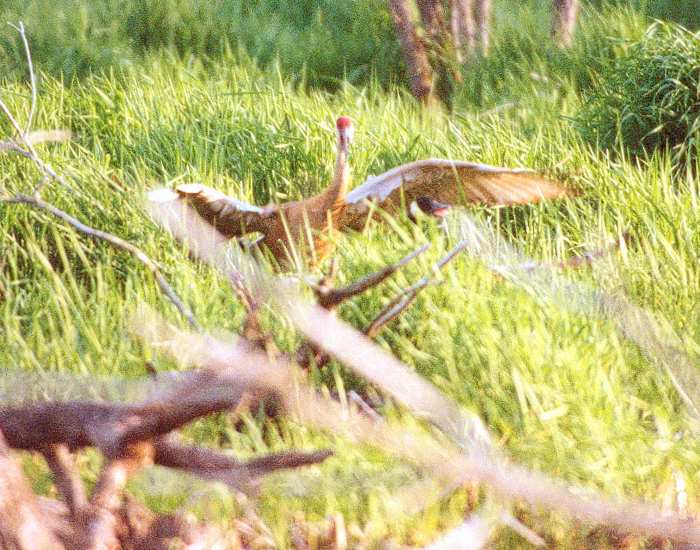 |
It was another exciting event for me when, just a few weeks after encountering a group of adult sandhill cranes, I came across this solitary juvenile sandhill crane in the same place, behind my northern Illinois apartment complex. I might have been pleased to see this bird, but others weren't. Look closely in this photo, and you'll see that the crane is chasing a Canada goose, which is just in front by a couple of feet, and looking pretty worried! Cranes generally can be fairly aggressive birds, so it's not surprising to see this behavior, however Canada geese are large, powerful birds who can usually look after themselves, so it's still an interesting sight to see. It's said that cranes use the bright red spot on their head to signal aggression. |
|
It's a nice thing to see so many sandhill cranes, because they were (and still are, in some places) severely hunted for many years, to the point where they were fairly rare. . The last sandhill cranes stopped breeding in Illinois in 1890, and only returned in 1979. |
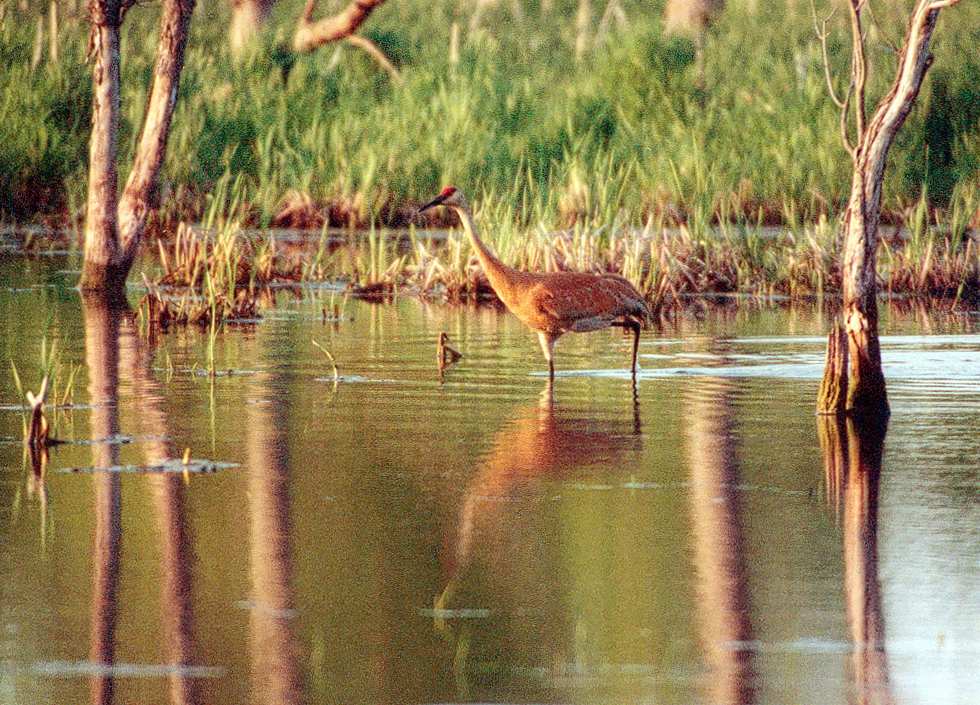
|
|
By 1994 it was estimated that more than 650,000 sandhill cranes lived in North America, making them the most common of the world's 15 species of crane. |
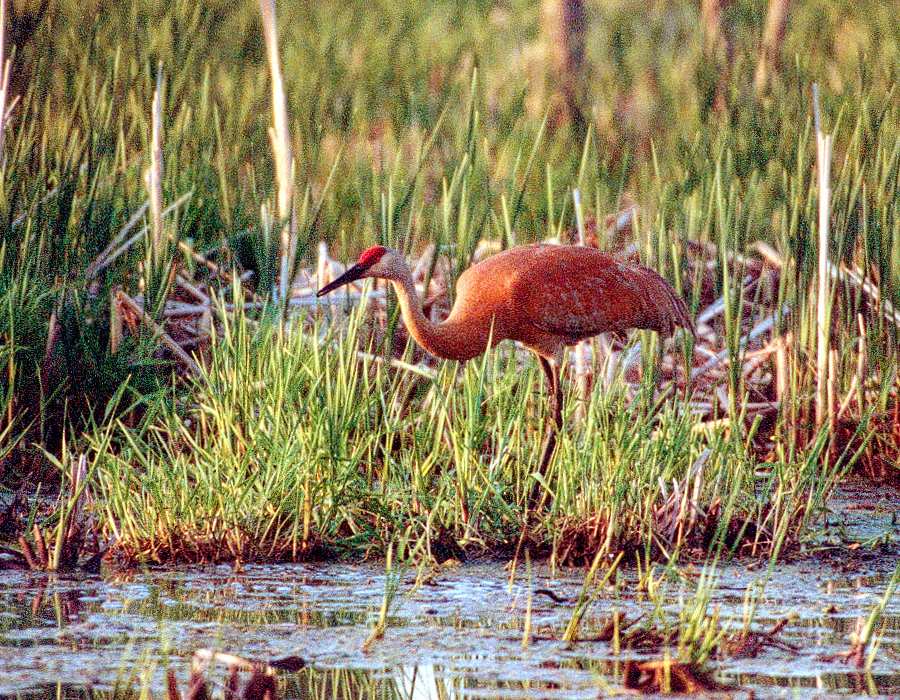 |
|
It would have been a real shame to lose the sandhill crane, since apart from anything else, six million year old fossils found in Nebraska suggest that they are the oldest surviving bird species in the world. |
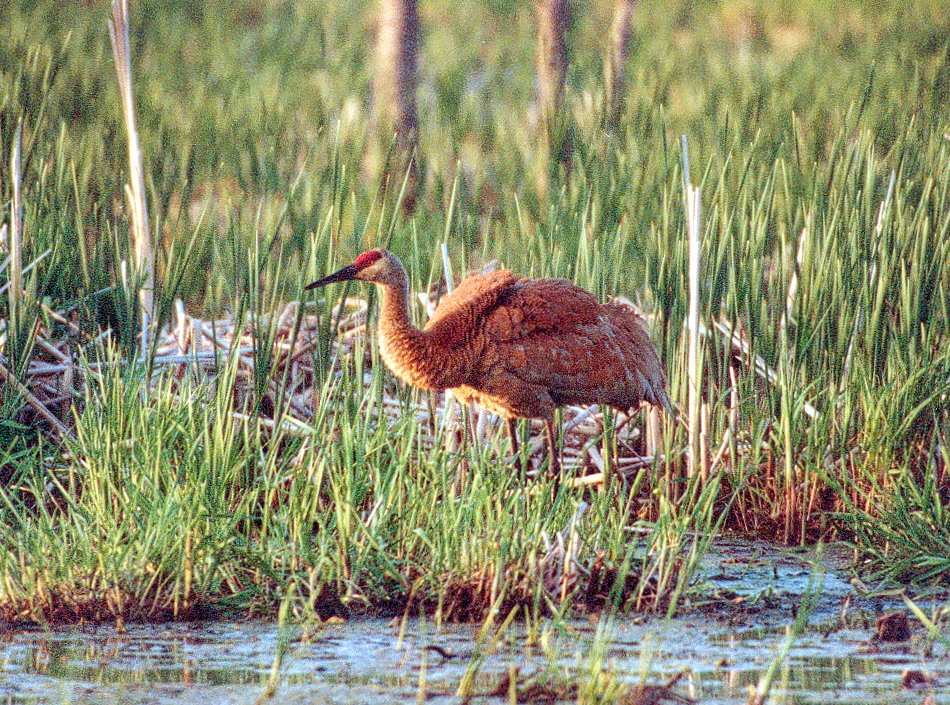 |
|
The other American crane, the whooping crane, which is similar in appearance except that its plumage is white instead of grey, is much rarer and is still in some danger of extinction. |
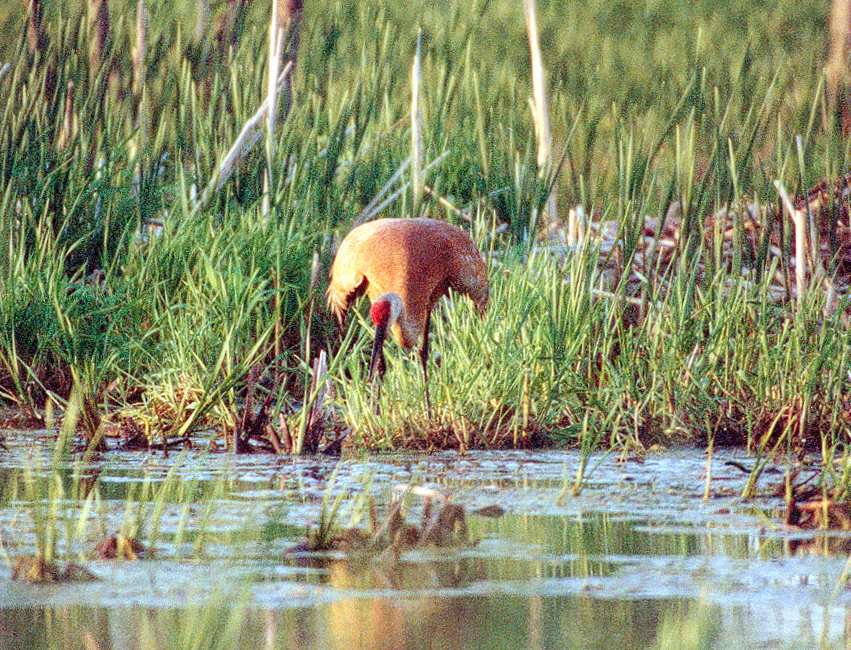 |
|
Precocious behavior starts early with these birds - just a day or so after hatching, sandhill crane chicks are out foraging with their parents. |
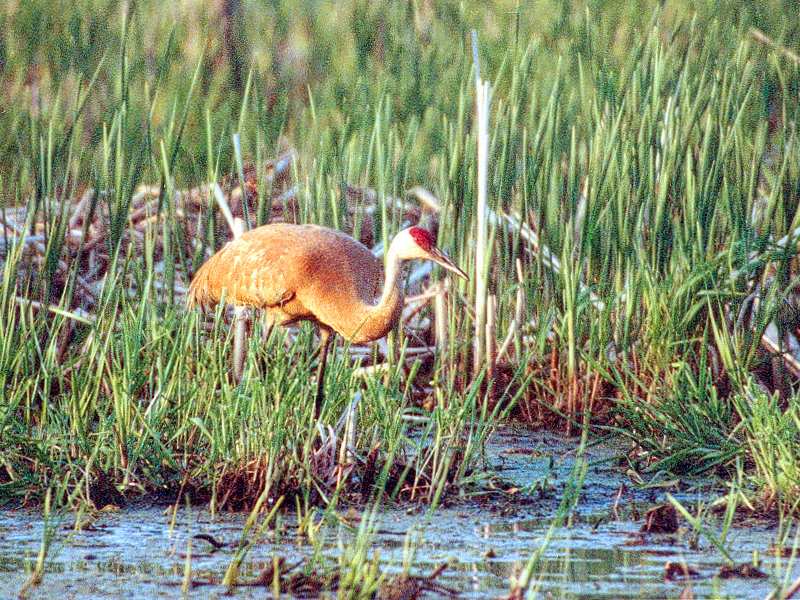 |
|
At ten months they're completely on their own. |
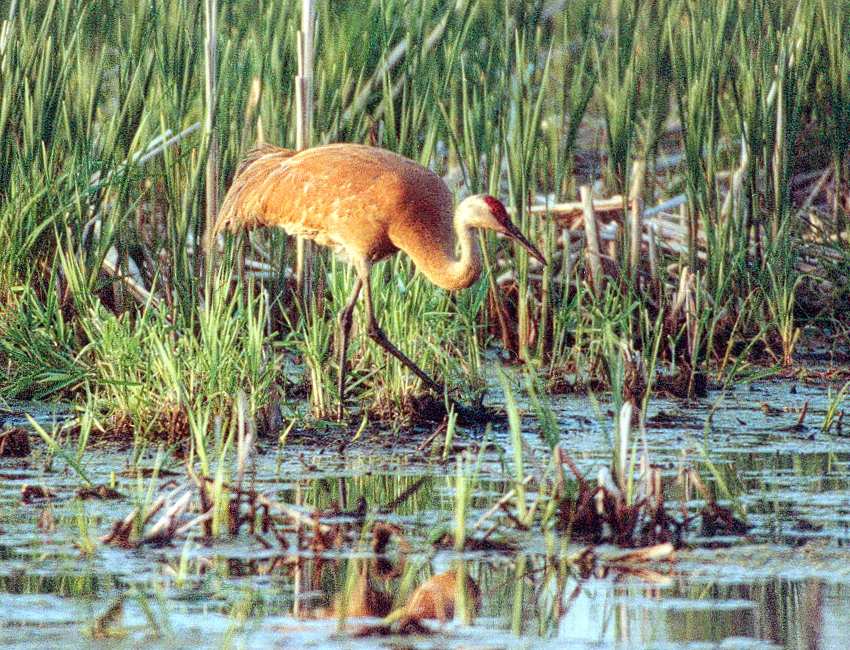
|
|
Like many other cranes, sandhill cranes migrate each Spring and Fall. Up to 550,000 of them congregate on a short stretch of the Platte River in Nebraska each Spring. |
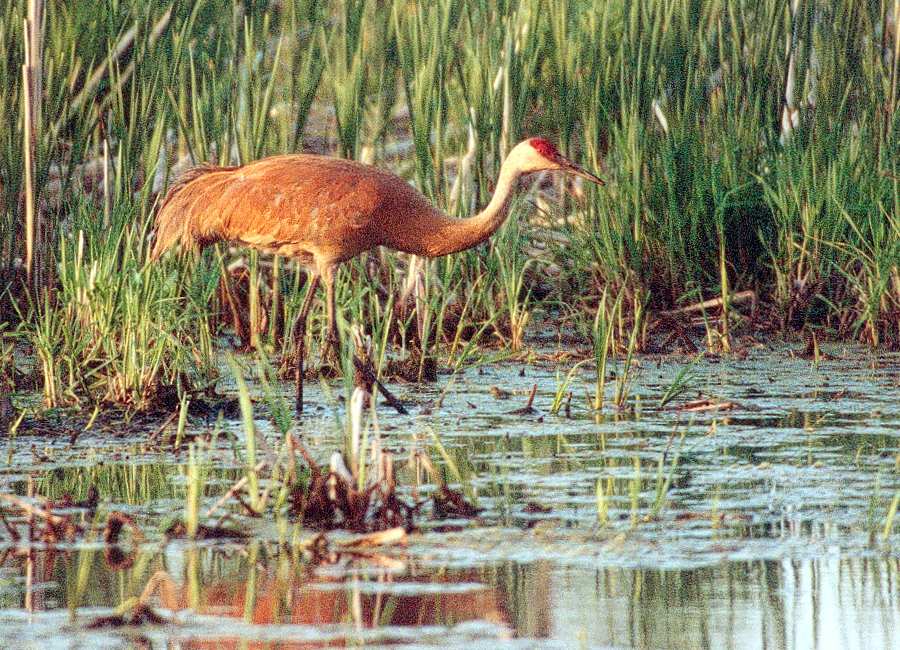 |
|
In the Fall, around ten thousand come together in Indiana's Jasper-Pulaski State Wildlife Area. |
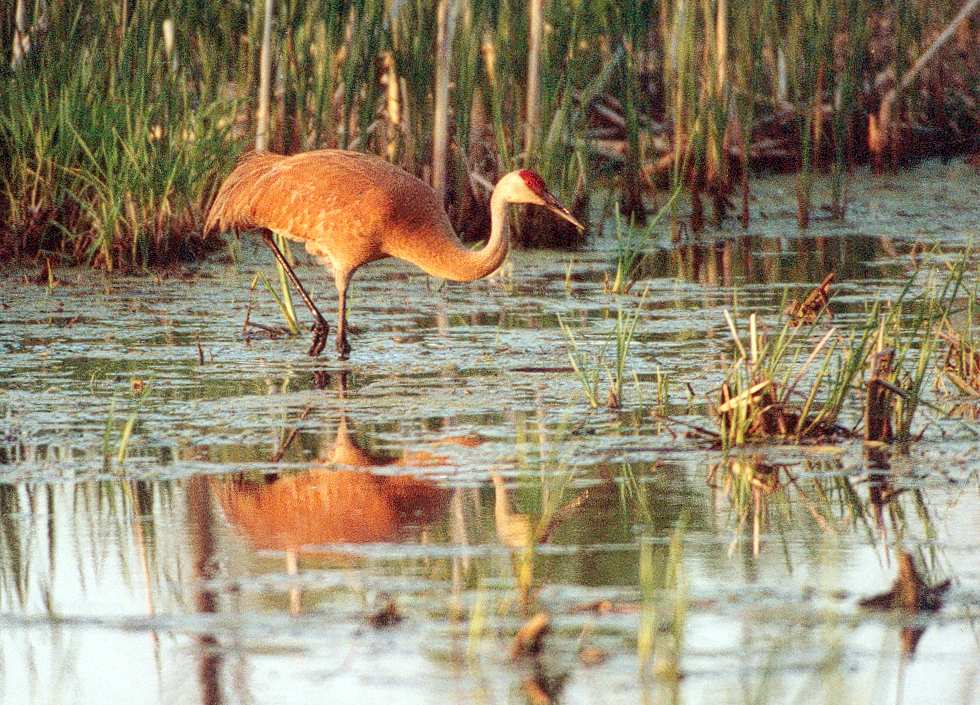
|
|
One secret of the cranes' success is their omnivorous diet, consisting of grain, insects, worms and crustaceans. |
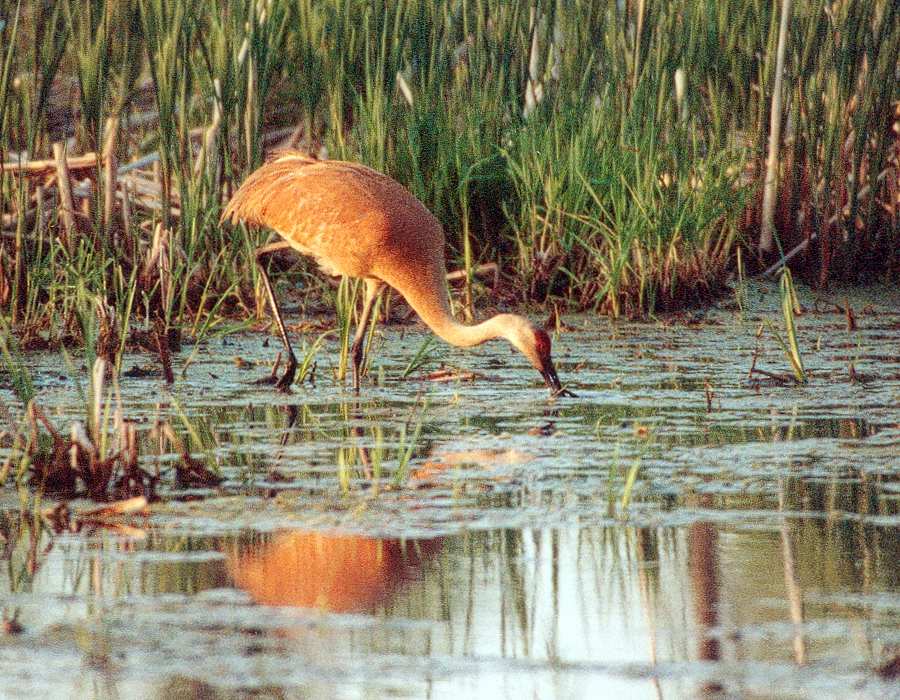
|

|